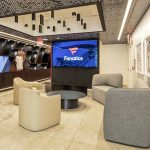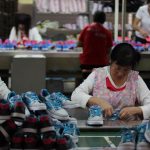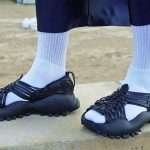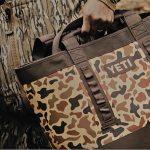VF Corporation CEO Bracken Darrell and the company’s senior leadership team continue to make the hard choices as the company works to right-size the organization, cut costs, build margins, raise liquidity, reduce net leverage, and divest poor-performing businesses.
Wall Street appears to react positively to VFC’s continued focus as company shares rose over 4 percent in NYSE trading on Tuesday, January 21, amid a range of notes from analysts.
The parent company of The North Face, Vans, Timberland, Jansport, and Dickies, among other outdoor and street lifestyle brands, continues to take action against the company’s goals set out in its Reinvent turnaround plan.
“VF confirms that it has begun a reorganization related to select commercial functions globally, intended to align these organizational structures to its new business model,” offered VF on January 21 as part of its boilerplate media response. This work relates to the company’s previously announced turnaround strategy. While these decisions are never easy, we are confident this work will result in a stronger foundation that supports the company’s growth and value-creation objectives. We’re committed to handling these changes with dignity and respect for all involved and want to thank those impacted through this process for their valued contributions to VF.”
The news comes a few months after VF announced the closure of its East Coast distribution center (DC), the closure of the Dickies office in Fort Worth, TX and the brand’s movement to the Vans headquarters to be closer to the streetwear-focused footwear brand.
Despite the commentary and storylines about cuts, Stifel Financial Managing Director Jim Duffy noted last week that the company has also focused on growth.
“Growth, however, is part of the plan with each $1bn incremental contributing 150bps to 200bps flow-through to margin,” Duffy’s team wrote in an investor note following the company’s well-attended presentation at the ICR Investor Conference and subsequent private meetings.
“The high-visibility attendance encourages investor interest ahead of the forthcoming part-two brand-focused investor day in March and potential return to topline growth. Guidance is one quarter ahead, and the target-sparse communication style is designed to build credibility by overdelivering.
“Ultimately, we believe a return to topline growth, execution to cost-efficiency initiatives, and balance sheet deleverage will inspire a more optimistic valuation. We reaffirm our Buy rating and $27 target price and encourage investors with appetite for a turnaround to consider the risk/reward opportunity across FY26,” continued Duffy’s team.
Paul Lejuez and his research team at Citibank expect sales guidance for the fiscal fourth quarter to be flat to down low-singles.
“For 4Q, we expect the company to guide sales similar to where they guided 3Q on a constant-currency basis (flat to -2%), though we expect currency to be a greater headwind in 4Q at 200bps (vs 100bps in 3Q),“ the Citi team wrote on Tuesday morning. “We expect sales guidance as reported to be down 2-4% (compared to guidance of down 1-3% in 3Q). We believe they will project further sequential improvement at Vans. We believe mgmt will guide EPS to a loss of $0.12-0.17 (vs consensus of a loss of $0.15).”
At Williams Trading, Analyst Sam Poser provided a short and not-so-sweet message in his summary in his Monday, January 20 note to investors. While still advising a “Sell VFC“ note to start his analysis, Poser said that Williams was modestly increasing its estimates and raising its PT (Price Target) from $13 to $15. He expects cold weather facilitated better than expected 3Q25 sales from The North Face (TNF) and Timberland (TBL) and will likely lead to stronger than expected Fall 2025 orders.
However, he also noted that the firm was concerned that the strong sell-through rates this winter would lead to “over shipments of TNF and, more so, TBL in Fall ’25, leading to promotional activity, and a falling off in fall ‘27.”
Poser said Williams Trading was lowering its estimates for Vans, as “all checks indicate that canvas, vulcanized footwear remains very challenged and is not a priority for retailers and consumers going into FY26.”
David Swartz, a senior equity analyst at Morningstar Research Services, told Retail Dive in an emailed statement that VF has been “cutting costs and trying to simplify its business“ and is ahead of the original plan of $300 million in annual cost savings.
“Darrell seems to believe that there was too much bureaucracy at VF and that this has been hurting the business,“ continued the analyst to the publication.
***
Additional SGB Media coverage of VF Corporation’s moves under its Reinvent Program can be found below or by typing “VF“ in the Search toolbox above.
EXEC: VF Corp. Shuttering East Coast DC, Moving Dickies to Vans HQ; 360 Jobs Impacted
















